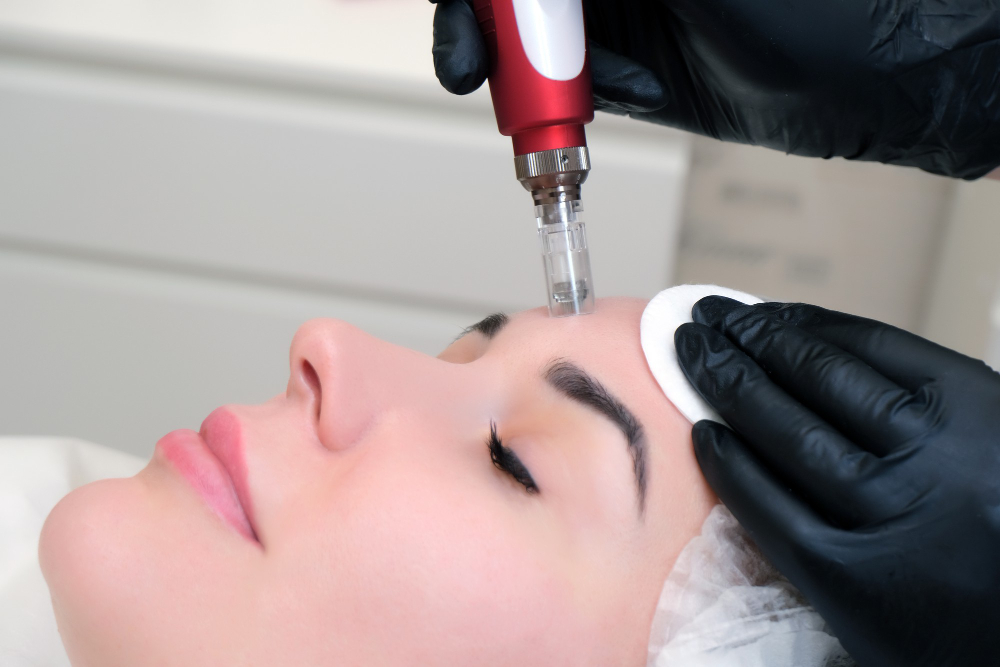
What Is Microneedling?
Microneedling is a non-surgical skin rejuvenation treatment that creates tiny, microscopic openings in the skin’s surface. This process stimulates the production of new collagen and elastin, which helps to improve skin texture, firmness, and overall appearance.
Request an AppointmentWhat Does Microneedling Treat?
Microneedling effectively addresses a variety of skin concerns, including:
- Wrinkles and fine lines
- Hyperpigmentation
- Sun damage
- Mild skin laxity
- Acne scars
- Enlarged pores
- Rough or uneven skin texture
- Dull complexion
Also known as percutaneous collagen induction, microneedling encourages collagen—the essential structural protein that keeps skin youthful and smooth—to regenerate naturally as it declines with age.
How Does Microneedling Work?
Using a handheld, pen-like device equipped with a circular array of tiny needles, the treatment is customized by adjusting needle depth. The provider moves the device over the skin, creating controlled micro-injuries in the epidermis without causing significant damage.
These small punctures trigger the skin’s healing response, promoting collagen and elastin production. Additionally, the tiny channels allow for better absorption of topical serums and treatments applied during or after the procedure, enhancing overall results.
What Is the Recovery Like?
Microneedling is minimally invasive but may cause redness and flushing for 24 to 72 hours following treatment. It’s important to avoid makeup during this period since the open pores can easily become clogged.
Other common side effects within the first 24 to 48 hours include mild peeling, dryness, swelling, and small bumps. Following your provider’s instructions on moisturizers and cleansers is key to proper healing.
As your skin heals, it will begin to look more radiant and refreshed. Results improve gradually over several weeks to months as new collagen and elastin continue to develop.
